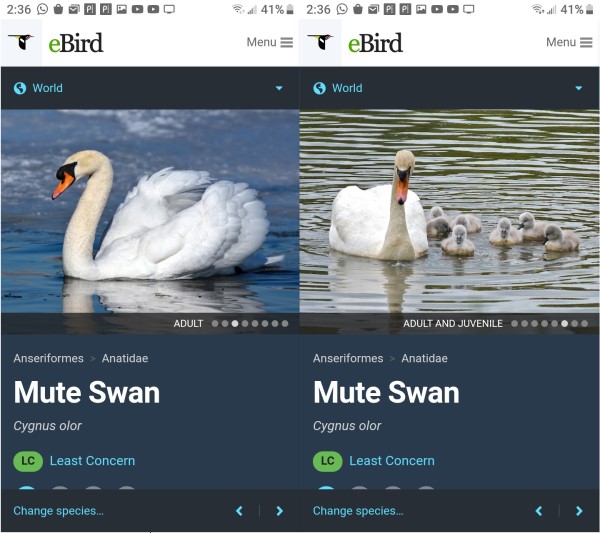Guest blog by Cathy Hou
Editor’s note: Cathy interned with Dr. Dan Brooks, HMNS Curator of Vertebrate Zoology. Her hard work culminated with publication of this article on Mute Swans in our beloved Lone Star state: https://www.hmns.org/wp-content/uploads/2021/12/SwanEprint.pdf
A Mute Swan swims in the lake, white feathers glistening, recognized by its distinctive S-shaped neck. You may recognize these swans as the subjects of Tchaikovsky’s Swan Lake, or, perhaps you have heard about them in European fairy tales such as “The Ugly Duckling.” Indeed, Mute Swans are heavily romanticized in the fine arts. However, less heard of is the fact that Mute Swans are an introduced species in many places across the world—Texas being one of them— living in new areas where they previously have not been established. In many of these new homes, Mute Swans have rapidly turned into an “invasive species,” or an introduced species that causes harm.
So, what exactly is the gorgeous Mute Swan capable of? First, they are fierce eaters that can reach vegetation in deeper water than a lot of other native species. In fact, they’ve been known to overgraze—eating most of the vegetation in an area—before abandoning these places to find more food! That’s the equivalent of someone coming into your house to eat all your food, especially your favorite food, and setting off immediately after for your neighbor’s fridge.
Additionally, Mute Swans are not picky when it comes to finding their homes: this describes what scientists call “ecological plasticity.” Mute Swans live in both artificial and natural bodies of water and have even been spotted in drainage ditches (which would have given Tchaikovsky quite a fright!). In other words, they are quick to find new homes and settle down without much hassle. Finally, Mute Swans are known to be quite aggressive, but of course, for good reason: they need to protect their babies! Perhaps you’ve seen a few YouTube videos of swans attacking dogs and humans… (hint, the swan always wins).
These factors made Mute Swans the perfect research target for the Texas Invasive Bird Project. Dr. Brooks began by collecting data from a questionnaire. Perhaps you’ve seen this form around! Participants fill out the questionnaire when they spot 1 of TIBP’s 6 focal invasive species in Texas, recording details about the sighting too. For the Mute Swan project, Dr. Brooks also added an eBird data set so we could have more sightings to find out how these birds are moving across Texas over time.

Then, we mapped these sightings, color-coding them by the year spotted. Interestingly, we found that Mute Swans liked to crowd around five places: Austin, Houston, Dallas-Fort Worth metroplex, San Antonio, and Tyler metropolitan area. With the map made, we started to notice things we hadn’t seen before! For instance, many recent sightings were happening just outside of these clusters, suggesting that Mute Swans are on the move!
Of course, the data that people like you provide is extremely important for our project too! From these data , we could see what habitats Texas Mute Swans preferred, the most common behaviors of Mute Swans, how they interacted with other species, how they travel in flocks, and reproduce! Clearly, participants like you can provide many important observations— a field known as “community science.”
So, you might be wondering, what’s the verdict? Well, Texas Mute Swans did indeed show ecological plasticity, but for now, they don’t seem to be causing too much damage in terms of overgrazing, fecal contamination, or aggression. Why? Because they have small flock sizes; in fact, on average, you’ll only see 3 of these birds swimming together. Think about it like this: if you have 10 brothers and sisters, a holiday feast might be gone in no time, but when it’s just you and 2 siblings, it might seem that no matter how much you eat, you won’t finish it all! Not to mention, many Texas Mute Swans like to live in larger bodies of water. That means that there’s much more room to swim around and much more food for everyone too!

However, we do know that if swan numbers in Texas continue to grow (as they currently have), we might expect more and more negative effects to surface. That includes more Mute Swan attacks and the greater possibility of overgrazing. That’s what makes the Texas Invasive Bird Project so important—we must monitor these invasive species! If you’re interested in contributing, you can start by filling out the questionnaire. Next time you spot a bird, see if it’s one of our invasive suspects! After all, maybe Mute Swans aren’t the unproblematic, gorgeous fairy tale creatures we know and love, but they aren’t monsters either. The important thing is that we continue collecting data and keep an open mind as to wherever the data leads us!
Further reading from Dr. Dan Brooks:
A dispersed flock of angels, a rare woodpecker and a local cast of celebs from the past…







